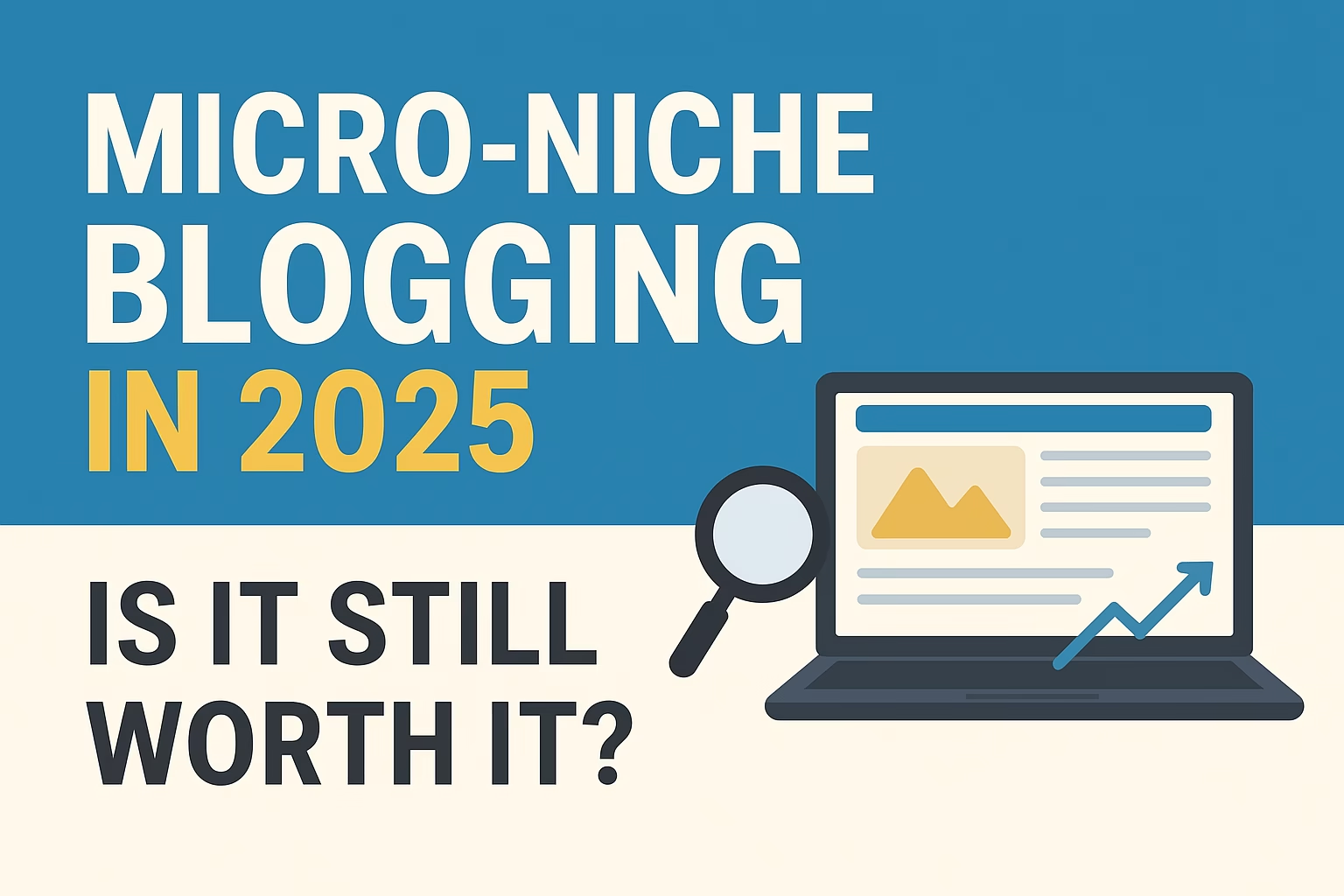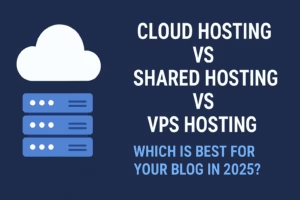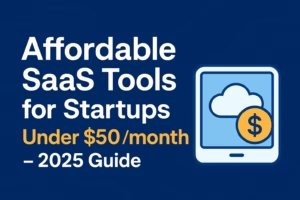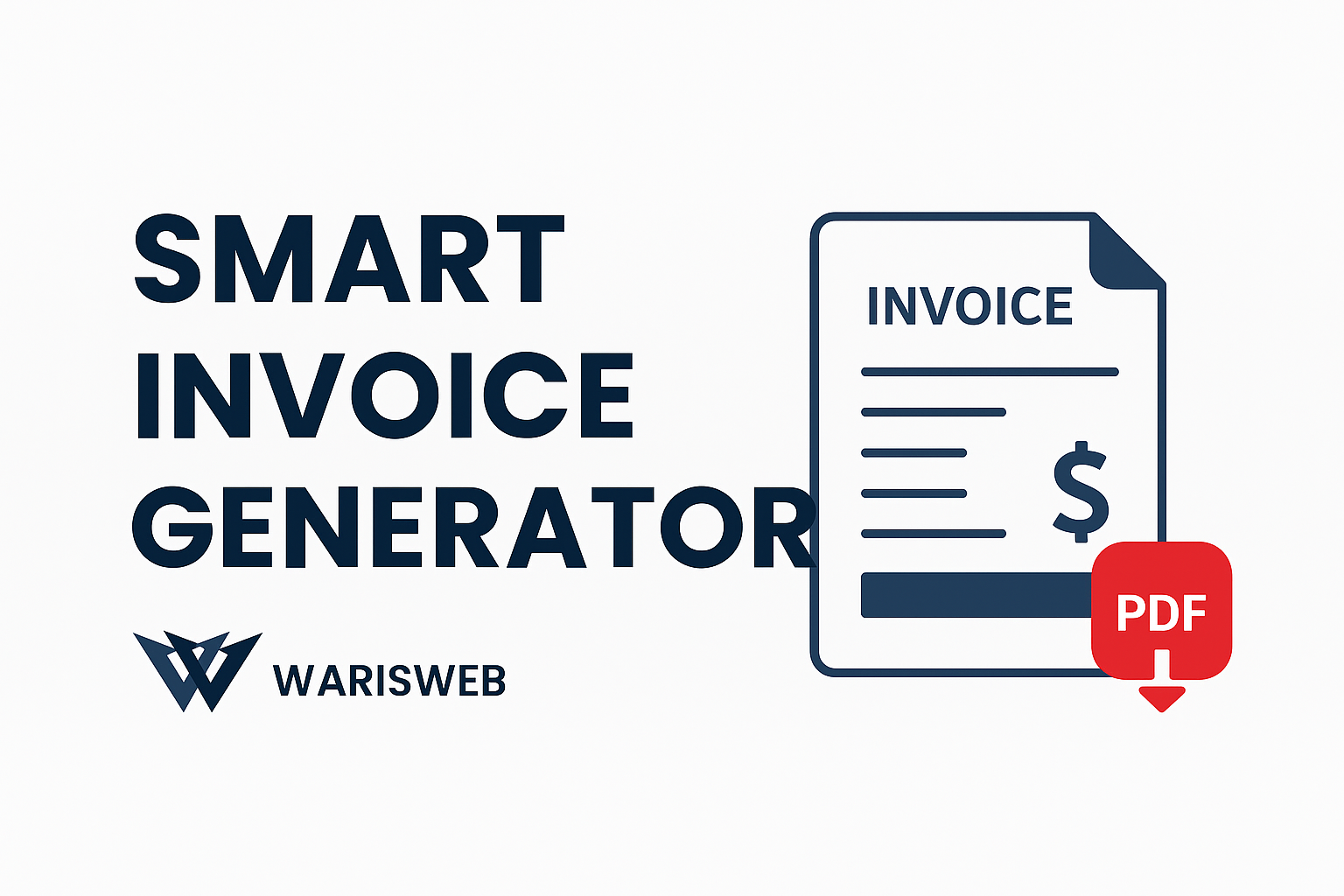Micro-Niche Blogging in 2025: Is It Still Worth It?

Remember when everyone was talking about micro-niche blogging as the “easy money” strategy? Those days when you could throw up a 50-page site about “best blenders for smoothies” and watch the affiliate commissions roll in? Well, I hate to break it to you, but 2025 isn’t 2015.
That said, before you write off micro-niche blogging entirely, let me share what I’ve learned from actually running several micro-niche sites and talking to dozens of bloggers who are still making it work today. The landscape has changed dramatically, but opportunities still exist – you just need to know where to look and how to adapt.
What is Micro-Niche Blogging?
Let’s get this straight first. A micro-niche blog is like a laser-focused cousin of regular niche blogging. While a niche blog might cover “fitness,” a micro-niche blog would zero in on something like “kettlebell workouts for busy moms” or “plant-based protein powders for runners.”
The key differences:
- Regular niche: Fitness (thousands of topics)
- Micro-niche: Home gym equipment under $200 (maybe 20-30 topics max)
The goal of a micro-niche blog is to either sell affiliate offers or your own offers. You almost never see ads on a micro-niche blog because the volume of traffic is too low.
Think of it this way: instead of trying to be Wikipedia for fitness, you become the go-to expert for one very specific problem. Examples of successful micro-niche sites I’ve seen include:
- Reviews of ergonomic office chairs under $300
- Camping gear for solo female travelers
- Indoor plants that thrive in low light
- Dairy-free baking substitutes and recipes
The beauty of micro-niche blogging used to be its simplicity. Build 30-50 pages, target low-competition keywords, add some affiliate links, and profit. But here’s where things get interesting (and complicated) in 2025.
The Rise and Fall of Micro-Niche Blogging
Let me tell you the story of how we got here, because understanding this history is crucial to knowing whether micro-niche blogging makes sense for you today.
The Golden Age (2010-2018): Back in the day, Google was easier to “game.” You could rank a new site in weeks, not months. Competition was lower, and people were still figuring out SEO. I knew bloggers who were making $3,000-5,000 per month from sites they built in their spare time over a few weekends.
The Reality Check (2019-2023): Then came the algorithm updates. Google started favoring bigger, more authoritative sites. E-A-T (Expertise, Authoritativeness, Trustworthiness) became a thing. Many micro-niche sites got hit hard, and earnings dropped significantly.
The 2025 Landscape: On June 30, 2025, Google launched its June core algorithm update, the second major algorithm change this year, with a global rollout that took up to three weeks. This latest update has continued Google’s trend of prioritizing high-quality, authoritative content over quick-win tactics.
The harsh truth? The “easy money” days of micro-niche blogging are largely over. But that doesn’t mean it’s dead – it just means the strategy has evolved.
Advantages of Micro-Niche Blogging in 2025
Despite the challenges, micro-niche blogging still has some compelling advantages, especially if you approach it strategically:
Lower Competition (In the Right Spots)
While competition has increased overall, there are still untapped micro-niches, especially in emerging markets. Back in 2022, the market was worth $15.7 billion, but by 2024, it had already skyrocketed to $24.8 billion. New products and technologies create new micro-niche opportunities.
Faster Authority Building
It’s much easier to become the recognized expert on “best air fryers for college dorms” than “kitchen appliances.” You can realistically cover every angle of your micro-niche within 50-100 articles.
Targeted Audience Connection
When someone lands on your micro-niche site, they know you “get” their specific problem. This leads to higher engagement and conversion rates.
Lower Content Requirements
A micro niche site that does really well can make 500 to 1000 dollars per month on average. While this isn’t life-changing money, it’s achievable with 30-50 well-crafted articles instead of the hundreds needed for broader niches.
Quick Market Testing
Micro-niche sites are perfect for testing market demand before investing in larger projects. You can validate ideas quickly and cheaply.
Challenges of Micro-Niche Blogging in 2025
Now for the reality check – and trust me, I learned some of these lessons the hard way:
The E-E-A-T Factor
Google now prioritizes Experience, Expertise, Authoritativeness, and Trustworthiness more than ever. Google’s go-to guidelines emphasize expertise and trust to help you rank. This means you can’t just rehash product descriptions – you need genuine experience and expertise.
Authority Site Competition
Big players like Wirecutter, Consumer Reports, and niche-specific authority sites now dominate many micro-niches that used to be easy wins. They have bigger budgets, better content teams, and more domain authority.
Limited Monetization Ceiling
Even successful micro-niche sites typically cap out at $500-1,500 per month. That’s great side income, but it won’t replace a full-time salary without multiple sites.
Algorithm Vulnerability
Small sites are more vulnerable to algorithm changes. One update can devastate traffic overnight, and recovery can take months or may never happen.
Content Depth Requirements
Google now expects more comprehensive, in-depth content. The days of 500-word “reviews” are over. You need genuine, detailed analysis based on real experience.
Is Micro-Niche Blogging Still Worth It in 2025?
Here’s my honest assessment after running micro-niche sites and helping others with theirs:
Yes, if you’re looking for:
- Side income (not primary income)
- Quick learning opportunities in SEO and affiliate marketing
- Testing ground for bigger niche ideas
- Passive income streams to supplement other revenue
No, if you want:
- Your primary income source
- Long-term, scalable business growth
- High monthly earnings (beyond $1,000-2,000)
- Something that requires minimal ongoing effort
Who should consider it in 2025?
- Beginners who want to learn digital marketing
- People with genuine expertise in specific areas
- Those looking to diversify income streams
- Individuals who enjoy the research and writing process
When it makes sense:
- You have real experience with the products/topics
- The micro-niche is evergreen (won’t become outdated quickly)
- You can create genuinely helpful, unique content
- You’re willing to treat it as a 6-12 month project, not a quick win
Best Strategies for Micro-Niche Blogging in 2025
If you decide to move forward, here’s how to do it right:
Choose Evergreen Micro-Niches
Focus on problems that won’t disappear. “Best budget laptops for students” is better than “Best iPhone 15 cases” because student laptop needs are consistent year after year.
Some evergreen micro-niches that still work:
- Home organization solutions for small spaces
- Budget-friendly pet care products
- Beginner-friendly fitness equipment
- Natural remedies for common health issues
- Energy-saving home appliances
Focus on Experience-Based Content
With the help of High authority and EEAT, Micro niche blogs are profitable and help you to succeed faster than regular blogs. But this requires genuine experience. Don’t review products you’ve never used. If you’re writing about camping gear, actually go camping.
Build True Topical Authority
Even in micro-niches, cover every angle thoroughly:
- Buying guides
- Comparison articles
- How-to tutorials
- Problem-solving content
- Maintenance and care guides
- Budget alternatives
- Premium options
Quality Over Quantity
Better to have 30 exceptional articles than 100 mediocre ones. Each piece should be the best resource on that specific topic.
Diversify Monetization
Don’t rely solely on affiliate income:
- Affiliate marketing: Still the primary method, but choose programs carefully
- Digital products: Create guides, checklists, or courses related to your niche
- Email list building: Build an audience for long-term value
- Sponsored content: Once you have traffic, brands may pay for reviews
Think Long-Term SEO
- Build legitimate backlinks through outreach and relationship building
- Focus on user experience and site speed
- Create content clusters that link to each other
- Update and refresh content regularly
The Reality Check: What Success Looks Like in 2025
Let me be brutally honest about expectations. Micro niche blogs are the smartest way to stand out, grow fast, and monetize effectively in 2025. With the right topic, targeted audience, and clear monetization strategy, even a small blog can become a high-income asset.
However, “high-income” in the micro-niche world typically means:
- Month 1-3: $0-50
- Month 4-6: $50-200
- Month 7-12: $200-800
- Year 2+: $500-1,500 (if successful)
These numbers are based on what I’ve seen from successful micro-niche bloggers. Some do better, many do worse. The key is having realistic expectations and treating each site as a learning experience.
My Personal Take: Should You Start a Micro-Niche Blog in 2025?
After running several micro-niche sites myself, here’s my honest recommendation:
Start a micro-niche blog if you want to learn. It’s still one of the best ways to understand SEO, affiliate marketing, content creation, and digital business fundamentals. The barrier to entry is low, and the lessons you learn will apply to bigger projects.
Don’t start one if you need income quickly. The timeline to profitability has extended significantly. What used to take 3-6 months now often takes 8-12 months or longer.
Consider it a stepping stone, not a destination. Use micro-niche blogging to build skills, then apply those skills to larger, more sustainable projects.
Most importantly, only enter micro-niches where you have genuine interest or expertise. The days of picking niches purely based on keyword difficulty and commission rates are over. Google rewards authentic, helpful content created by people who actually know their stuff.
The truth is, micro-niche blogging in 2025 is harder but not impossible. It requires more work, more expertise, and more patience than it used to. But for the right person with the right approach, it can still be a profitable venture and an excellent learning experience.
Bottom line: Micro-niche blogging isn’t dead, but it has definitely evolved. Success now requires strategy, expertise, and patience rather than just good keyword research and decent writing skills.
Frequently Asked Questions?(FAQ's)
Yes, but profitability requires strategic planning and realistic expectations. Successful micro-niche blogs typically earn $500-1,000 per month after 12-18 months of consistent work. Focus on evergreen niches, build genuine expertise, and prioritize E-E-A-T principles for the best chance of success.
Absolutely. You only need hosting ($3-10/month), a domain ($10-15/year), and WordPress. The main investment is your time for content creation and research. Expect to spend 6-12 months creating quality content before seeing significant income.
Evergreen niches with genuine personal experience work best. Consider home organization tools, budget pet care products, beginner fitness equipment, natural health remedies, or hobby-specific gear. AI tools and SaaS reviews are trending but require technical expertise to stand out.
Micro-niche blogs offer quicker initial results and lower competition, making them ideal for beginners and side income. Authority blogs require more time and investment but offer higher long-term earning potential and stability. Choose based on your goals, timeline, and commitment level.
Share This Post:
Previous Articles:

Cloud Hosting vs Shared Hosting vs VPS: Which is Best for Your Blog (2025)?







